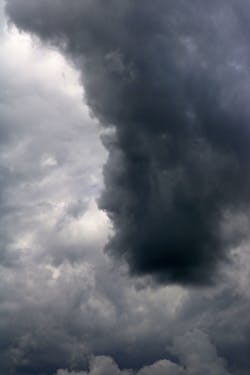With Wisconsin customers experiencing outages more often due to high winds, winter storms and spring and summer flooding, Smart Electric Power Alliance (SEPA) has completed microgrid feasibility studies that identify options for a monastery, school, wastewater treatment plant and police department.
Jared Leader, director, resilience, SEPA, is hopeful that SEPA’s process can serve as a model for getting microgrids deployed across the US.
“This analysis can serve as a template for others to do the same thing and get carbon-free projects on the ground,” he said.
The studies were funded by the Wisconsin Office of Energy Innovation’s Critical Infrastructure Microgrid and Community Resilience Centers Pilot Grant Program (CIMCRC), which focuses on deploying microgrids and other distributed energy resources to provide resilience.
The program offered $985,000. The Wisconsin Public Service Commission divvied up the money among 15 applicants. SEPA received funding for four of the projects. All of the grants awarded under the program were for critical infrastructure microgrids and community resilience centers.
While some states take a big look at all critical infrastructure to determine where to site microgrids, SEPA took a different approach in Wisconsin. The organization identified sites whose owners had already expressed interest in distributed energy resources, resilience or
on-site generation, said Leader.
The goal
The goal was to take advantage of projects with existing infrastructure or a site that serves an emergency function that would benefit from backup power, Leader explained. Some utility customers were already signing up for resilience-as-a-service options offered by utilities and third parties.
SEPA’s process involved collaborating with WPPI Energy — a nonprofit that provides wholesale electricity to 51 community utilities — plus the local utilities and electric customers. SEPA examined issues such as natural disaster risks, customers’ emission reduction goals and critical facilities. Also examined were the economic and technical feasibility of adding solar, storage and other microgrid technologies to create resilience. The studies identify several options for achieving resilience, carbon emission reductions, savings and income.
Reason: carbon reduction
One example is the Holy Wisdom Monastery, which has solar onsite and aims to achieve net zero energy. The stakeholders — SEPA, Holy Wisdom Monastery’s director of operations, Hoffman Planning, Design and Construction and the local utility, Madison Gas & Electric — participated in the design process and met each month to discuss options. During the process, they chose four design scenarios, according to a summary of the project from SEPA and the Wisconsin Office of Energy Innovation.
The monastery is designated as an emergency shelter that would provide critical services for stranded airline travelers from Dane County Airport during an emergency. And the monastery’s infrastructure is named an emergency location for Westport Township administrators during an extended outage.
Holy Wisdom Monastery has an agreement with Madison Gas & Electric under which the utility owns and operates a diesel generator, and the monastery pays about $3,000 per year for resilience via the generator, said Leader.
“The reason behind the utility’s involvement in the study was to explore a carbon-free solution for its customer,” said Leader. The utility already provides resilience service at the site; including it on the team helped to create a sense of continuity. The utility and the monastery are exploring both customer-owned, behind-the-meter solutions and utility-owned, front-of-the-meter solutions to meet the sustainability and resiliency goals of the monastery, said Leader.
In its analysis for Holy Wisdom, SEPA created a benefit-cost analysis of the four different scenarios chosen by the stakeholders and concluded that the benefits exceed the costs in all scenarios, over the project’s life, with some scenarios providing more benefits than others.
The scenarios included ground-mounted solar in each case, plus different-sized batteries. In Scenario A, a 175 kW/500 kWh battery would provide short-term resilience, peak shaving and energy arbitrage. In Scenario B, a 150 kW/600 kWh battery would provide peak shaving. Scenario C called for a 150 kW/600 kWh battery for energy arbitrage and Scenario D called for a 1,000 kW/4,000 kWh battery for long-term resilience and economic dispatch.
The study looked at the net present value of costs, plus the net present value of benefits. The net present value of costs ranged from $831,927 for Scenario A to $2,848,195 for Scenario D. The net present benefits in all four scenarios ranged from $629,406 (Scenario B) to $677,179 (Scenario A).
Up next
Along the way, the team evaluated how to balance priorities.
Some benefits can just go to the customer, and some can go to utilities and their ratepayers, said Leader.
“Microgrid projects can be optimized around economic viability, sustainability and resilience. We helped our project teams and stakeholders make decisions starting with the site’s resilience needs and sustainability goals,” said Leader. The teams looked at decisions such as whether to dispatch the battery for customer demand savings or for grid services, or to maintain charge in the battery for a reserve in the event of a grid outage. If the battery is reserved for resilience, then it can’t be used for grid services, he noted.
Each decision carried its own pros and cons, and the studies analyzed them in both qualitative and quantitative terms, he added.
What’s next
With the monastery study complete, the stakeholders will create a more detailed benefit-cost analysis and move to the implementation phase of microgrid development.
Possible next steps include identifying ownership and operation structures, construction coordination, identifying financing and funding, and deploying a full engineering design and construction study, said the project summary.
Other microgrid feasibility studies
SEPA conducted similar studies for Florence Elementary School — an American Red Cross shelter — Heart of the Valley Metro Sewer District Wastewater Treatment Plant and Sauk Prairie Police Department, which houses an emergency operations center that provides critical services to residents in Sauk County during emergencies.
Forming a team makes it easier
The studies demonstrate how microgrids can support the transition to a carbon-free energy future and how organizations can work together to create innovative solutions for customers, said Leader.
“On the surface, a microgrid project can be an overwhelming endeavor for a monastery, school district, sewer district, or police commission. However, when presented as an onsite solution in terms of resilience, energy savings and carbon reduction, customers and utilities can make informed decisions for their communities,” said Leader.
Learn more about microgrid feasibility studies. Subscribe to the free Microgrid Knowledge Newsletter.








